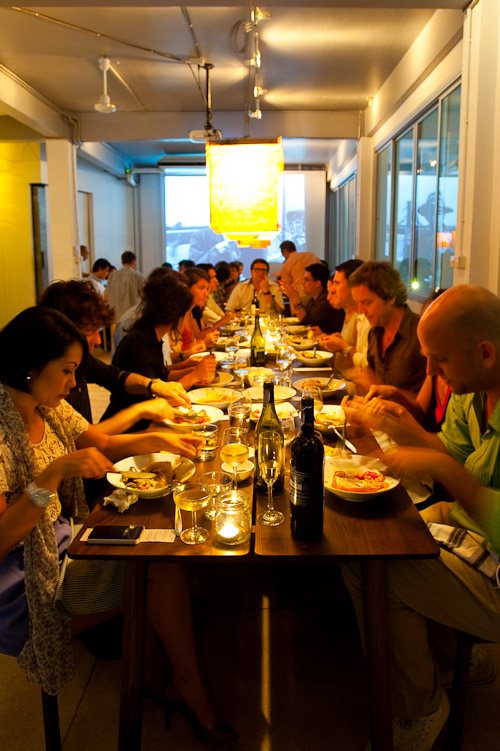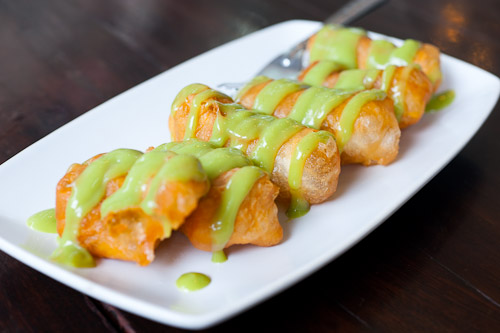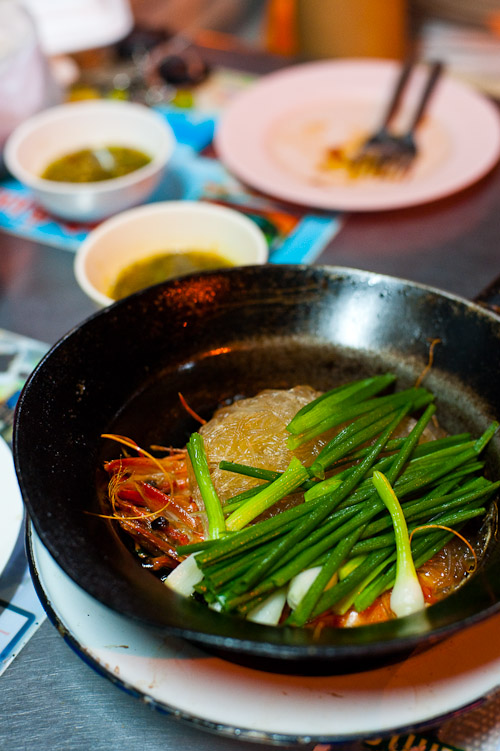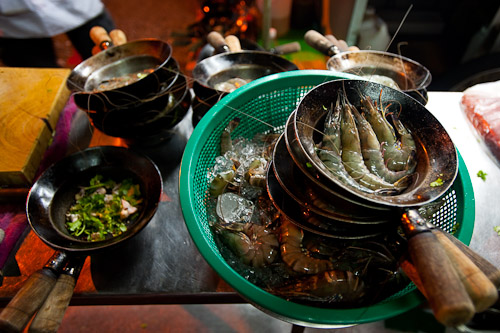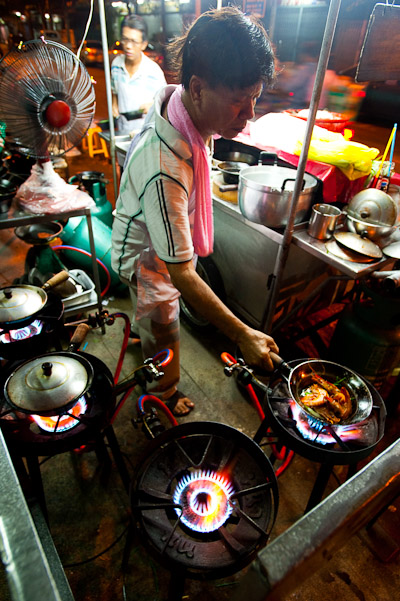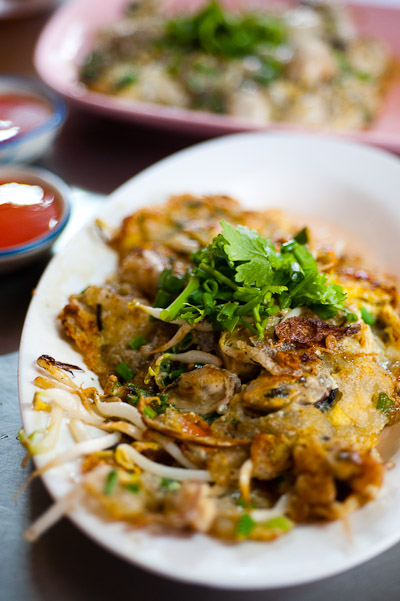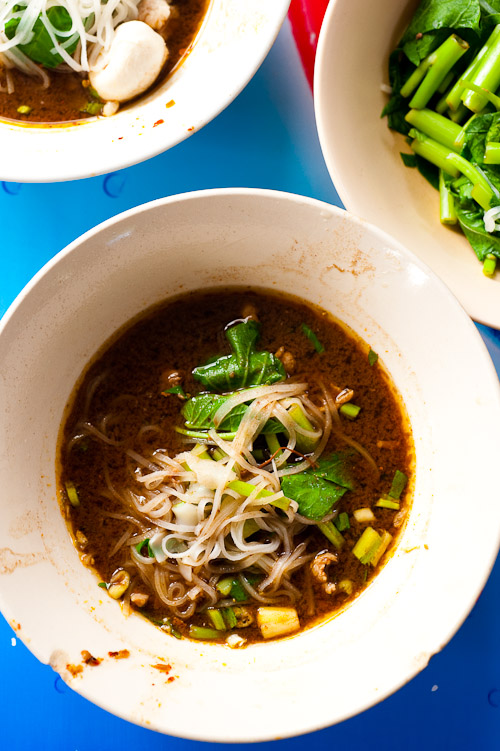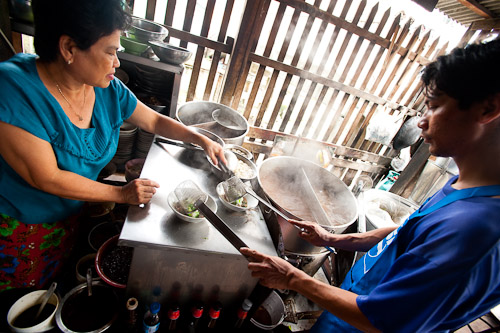 This is a fantastically simple but tasty dish you can make even if you have access to only the most rudimentary Asian ingredients. One of many Chinese-influenced fried rice dishes available in Thailand, khao phat nam liab revolves around nam liab, Chinese salted olive (Western-style olives are not a substitute), which gives the dish a distinct briny/umami flavour. I suspect that I first encountered the dish at Je Ngor, a Chinese-Thai seafood chain with several branches around Bangkok.
This is a fantastically simple but tasty dish you can make even if you have access to only the most rudimentary Asian ingredients. One of many Chinese-influenced fried rice dishes available in Thailand, khao phat nam liab revolves around nam liab, Chinese salted olive (Western-style olives are not a substitute), which gives the dish a distinct briny/umami flavour. I suspect that I first encountered the dish at Je Ngor, a Chinese-Thai seafood chain with several branches around Bangkok.
The amounts below are approximate, and like always, you should constantly be tasting the dish as you cook it to arrive at the flavour that your prefer. To my mind, this dish should have an assertively salty flavour that is balanced by the acidic sides.
And as written instructions aren't always enough, here's a video - in Thai only - of the dish being made:
Khao phat nam liab
Lime, 1, diced Ginger, 1 small piece, peeled and diced Fresh chili, to taste, sliced Cilantro, a couple sprigs Roasted cashews, a couple Tbsps
Oil, 2 Tbsp Minced pork, about 1/4 cup Garlic, 2-3 cloves, minced Nam liab (Chinese salted olive), about 4, seeded and chopped Cooked rice, about 2 cups*
White pepper, to taste Sugar, to taste Soy sauce, to taste
Prepare lime, ginger and chili as described above, and set aside along with cilantro and cashews.
In a wok over medium-high heat, heat oil and add pork. Saute until somewhat dry and crumbly, about four or five minutes. Add garlic and salted olive, saute a minute or two longer until ingredients are combined and garlic is no longer raw.
Add rice, stirring to combine all the ingredients and separate the grains. Season with white pepper to taste, sugar, if desired, and soy sauce, if rice isn't salty enough.
Serve with prepared sides as illustrated above.
*As suggested in Thompson's Thai Street Food, I use just cooked rice, still hot from the cooker, and find that it doesn't tend stick to the pan and maintains the right consistency. This contrasts with many other fried rice recipes, which suggest using cooked rice that's been chilled overnight.




















